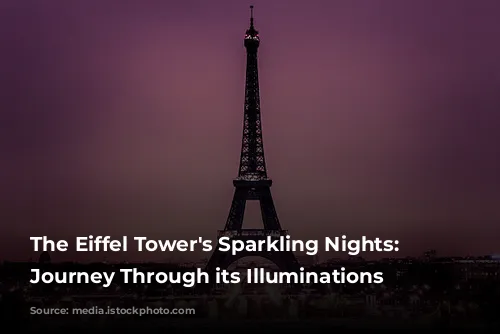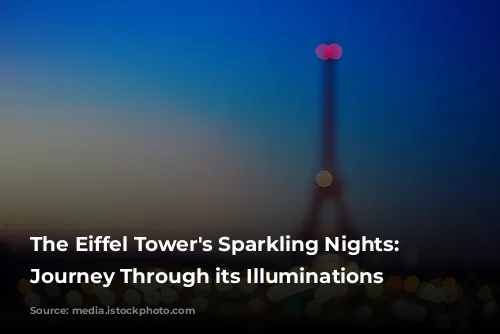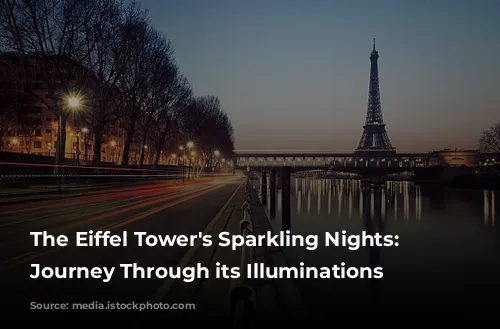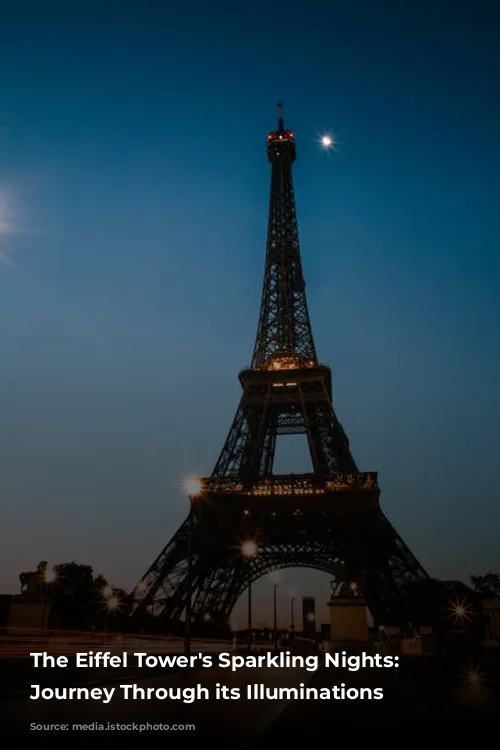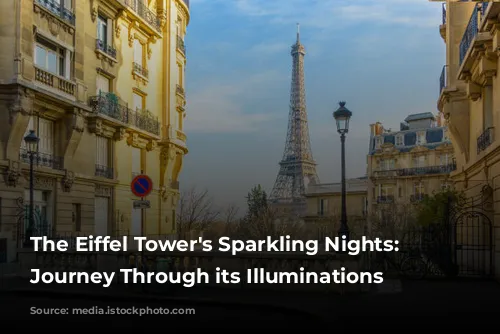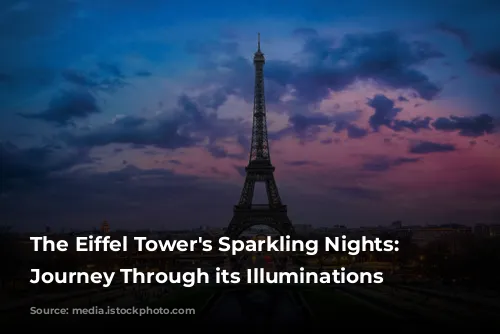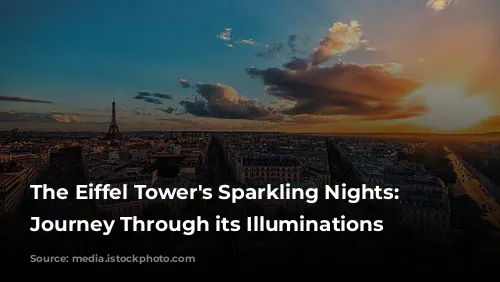The Eiffel Tower, a majestic symbol of Paris, transforms into an enchanting spectacle when the sun dips below the horizon. Its glittering lights illuminate the City of Lights, captivating visitors and locals alike. Prepare to be amazed as we unravel the captivating history of the Iron Lady’s illuminations, answering all your burning questions about the Eiffel Tower light show.
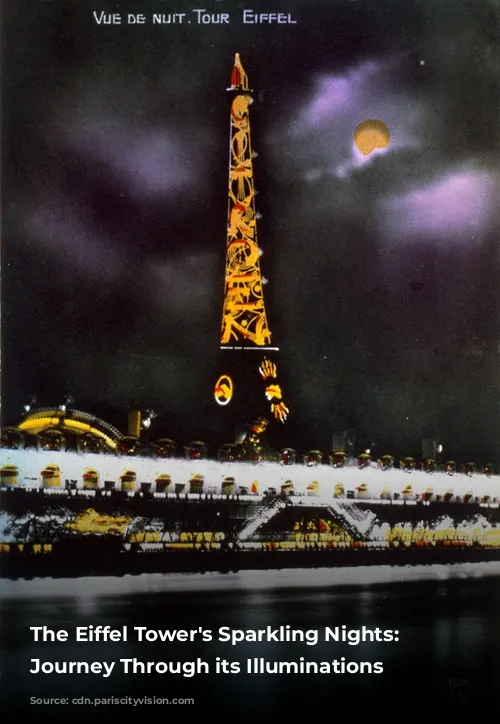
Unlocking the Secrets of the Eiffel Tower’s Illuminations
Curious about the Eiffel Tower’s dazzling light display? Let’s delve into the details. Does the Eiffel Tower shine every night? Absolutely! The Iron Lady’s lights grace the Parisian sky every night, from sunset until 1 AM. During the summer months, the show extends its magic for an extra hour, ending at 2 AM.
The Eiffel Tower’s brilliance doesn’t stop there. Every hour, for five minutes, the tower transforms into a sparkling wonder, twinkling with an array of lights. This enchanting spectacle, known as the “Eiffel Tower Light Show”, takes place every evening, adding a touch of magic to the Parisian skyline.
Ready to witness the Eiffel Tower’s mesmerizing illumination? You’re in luck! There are countless locations to enjoy this breathtaking view. The Trocadero offers a classic vantage point. A cruise on the Seine offers a unique perspective, gliding past the illuminated tower. And for a truly elevated experience, climb the Montparnasse Tower.
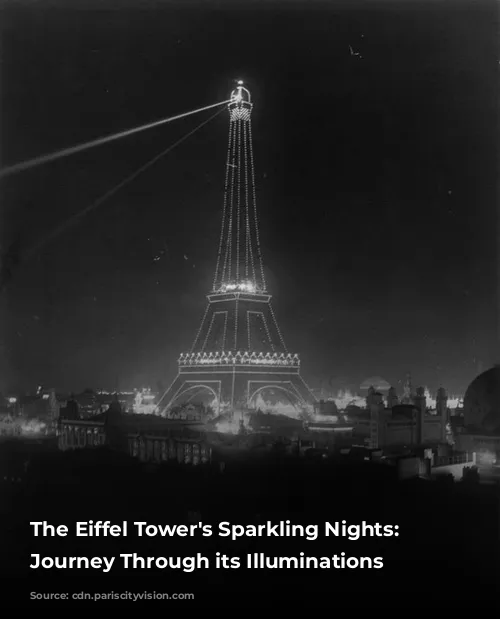
A History of Light and Wonder
From its humble beginnings to its modern-day brilliance, the Eiffel Tower’s illumination has evolved, reflecting the changing times. As early as 1889, the concept of lighting up the tower was born. Initially, gaslights nestled within opalescent glass globes bathed the tower in a soft glow. A lighthouse, intermittently changing its intensity, even projected the colors of the French flag, creating a patriotic spectacle.
By the 1900 Universal Exhibition, the illumination took a leap forward, becoming entirely electric. A stunning array of 5,000 light bulbs adorned the tower’s facades, creating a mesmerizing display of brilliance.
The Evolution of the Eiffel Tower’s Illuminations
The 1920s and 1930s saw the Eiffel Tower become a canvas for the Citroen Group. In 1925, for the celebration of July 4th, 250,000 multi-colored lamps illuminated the tower, displaying the Citroen brand name visible from a distance of 40 kilometers. The tower’s transformative power knew no bounds. In 1933, a captivating clock tower with colored minute and second hands was installed, adding another layer of intrigue to the tower’s illuminations. However, the show ended in 1936 due to escalating costs.
The 1937 Arts and Techniques Exhibition witnessed another dazzling spectacle. André Granet adorned the tower with a magnificent chandelier and 10 kilometers of multi-colored fluorescent tubes. Thirty spotlights illuminated the sky, while the tower’s facades shone white, its edges shimmering in gold, red, and blue. The Eiffel Tower continued to evolve, each event adding a unique chapter to its story.
The 1970s brought another memorable event. During Christmas 1978, the Eiffel Tower transformed into a giant, luminous Christmas tree, spreading holiday cheer throughout the city.

A Millennium of Illuminations
The year 2000 marked a monumental occasion. A neon countdown was installed in 1997, counting down the days to the turn of the millennium (D-1000). At midnight on January 1st, 2000, the Eiffel Tower burst into a fiery waltz of pyrotechnic tricks, celebrating the new millennium with a dazzling light show. The countdown itself, displaying the year 2000, shone brightly across the city. The following year, 2001, the tower celebrated the passage into the new millennium by shining a brilliant blue.
The 2000s continued to showcase the Eiffel Tower’s versatility and dynamism. In 2004, the tower was bathed in red to celebrate the Chinese New Year, honoring the “France-China Cultural Crossover Years”. In 2006, the tower was lit up in blue for the 20th edition of the Europe Festival, symbolizing unity and collaboration. The Rugby World Cup, held in France in 2007, was also celebrated with a unique illumination. From the ground to the second floor, the tower was illuminated in green, representing the stadium grass, complete with a lit rugby goalpost, an 85-meter long horizontal bar, a 13-meter wide ball suspended from the second floor, and a 120-meter wide flat screen for watching the matches. The Eiffel Tower was not just a spectacle; it was a platform for celebrating cultural events and sporting achievements.
The Eiffel Tower has also become a symbol of global commitments to sustainable development and health awareness. In 2007, the tower’s lights were turned off for “A Five-Minute Break for the Planet,” demonstrating a commitment to environmental conservation. In 2014, the tower was illuminated in pink, showcasing Paris’s support for the fight against breast cancer. The Eiffel Tower, through its illuminations, has become a symbol of hope, unity, and global awareness.
To truly appreciate the history and the captivating magic of the Eiffel Tower’s illuminations, a visit is a must. Step onto the grounds and be enchanted by its brilliance. Get all the information about the Paris Eiffel Tower, including ticket and tour prices, from Paris City Vision.
